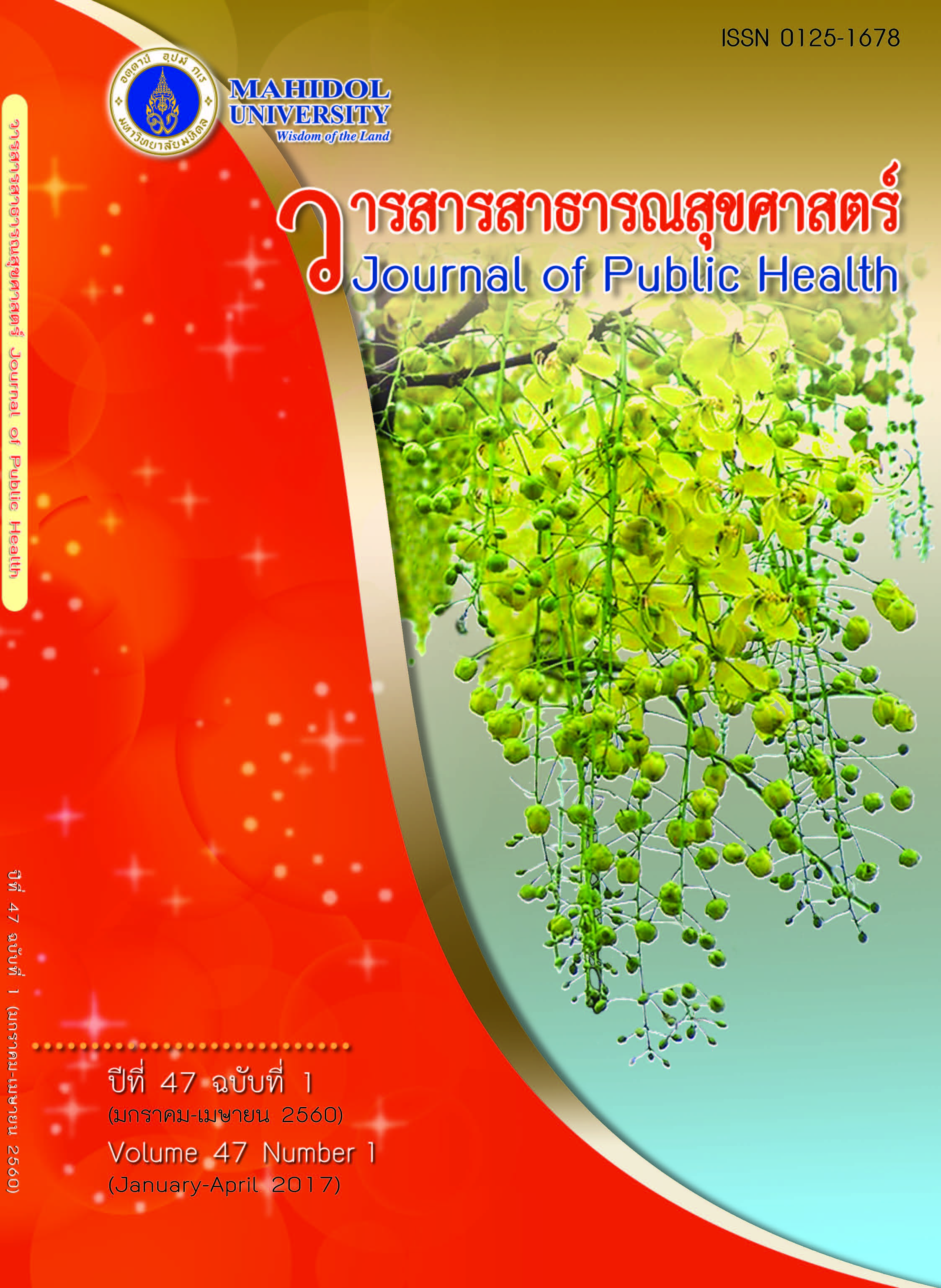การปรับค่าระดับการสัมผัสสิ่งคุกคามทางสุขภาพในสถานที่ทำงาน
Keywords:
การปรับค่าระดับการสัมผัส, สิ่งคุกคามทางสุขภาพ, สถานที่ทำงาน, Exposure adjustment, Occupational health hazards, WorkplaceAbstract
ในการกำหนดค่ามาตรฐานการสัมผัสสิ่งคุกคามทางสุขภาพขององค์กรต่าง ๆ นั้น มักจะกำหนดระยะ เวลาการสัมผัสไว้ที่ 8 ชม./วัน, 5 วัน/สัปดาห์ หรือ 40 ชม./สัปดาห์ โดยไม่เกิดผลกระทบใด ๆ ต่อสุขภาพ จึงเป็นปัญหาในกรณีที่ระยะเวลาการสัมผัสสิ่งคุกคามทางสุขภาพไม่เป็นไปตามที่กำหนด วัตถุ ประสงค์การค้นคว้าทางวิชาการนี้เพื่อศึกษาแนวทางที่ใช้ปรับค่าระดับการสัมผัสสิ่งคุกคามทางสุขภาพในกรณีที่ระยะเวลาการสัมผัสหรือระยะเวลาการทำงานไม่เป็นตามที่กำหนดไว้ข้างต้น ผลการศึกษาจากการทบทวนวรรณกรรมพบว่า ในหลายประเทศมีการปรับค่าระดับการสัมผัสสิ่งคุกคามทางกายภาพได้แก่ เสียงดัง และความร้อน ส่วนการปรับค่าระดับการสัมผัสสิ่งคุกคามทางเคมีนั้นไม่แนะนำให้ปรับค่าระดับการสัมผัส เนื่องจากสารเคมีเปลี่ยนแปลงตามเภสัชจลนศาสตร์และค่าครึ่งชีวิตทางชีวภาพที่ต่างกันของสารแต่ละชนิด ซึ่งทั้งสองปัจจัยนี้ถือเป็นข้อจำกัดในการปรับค่าระดับการสัมผัสสิ่งคุกคามทางสุขภาพในการศึกษาที่ผ่านมาส่วนใหญ่
Occupational Health Hazards Exposure Adjustment
Before defining any occupational health hazards exposure levels, authorized organizations always specify a period of exposure to hazards at 8 hours/day, 5 days/week or 40 hours/week without any health effects. Many employees do not work as aforementioned. This article studied adjusting occupational health hazard exposure levels for workers employed in different work schedules. The results from literature review found that in many countries, physical occupational health hazard adjustment such as for noise and heat were applied. However, chemical health hazards were not because of the differences among chemicals in their pharmacokinetics and biological half-lives. These two factors limited the studies of adjusting occupational health hazard exposure levels.
Downloads
Published
Issue
Section
License
Creative Commons License CC-BY-ND


